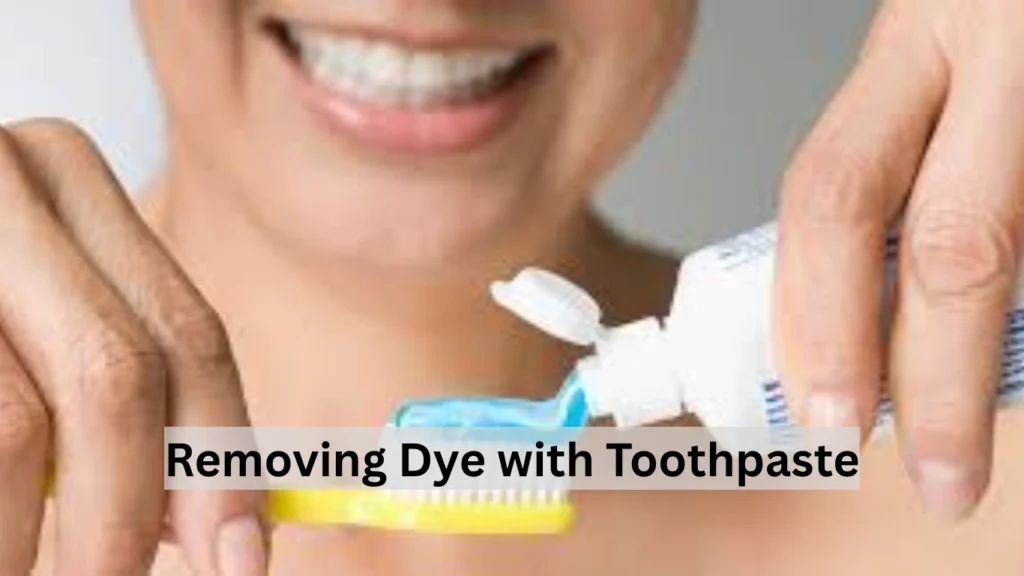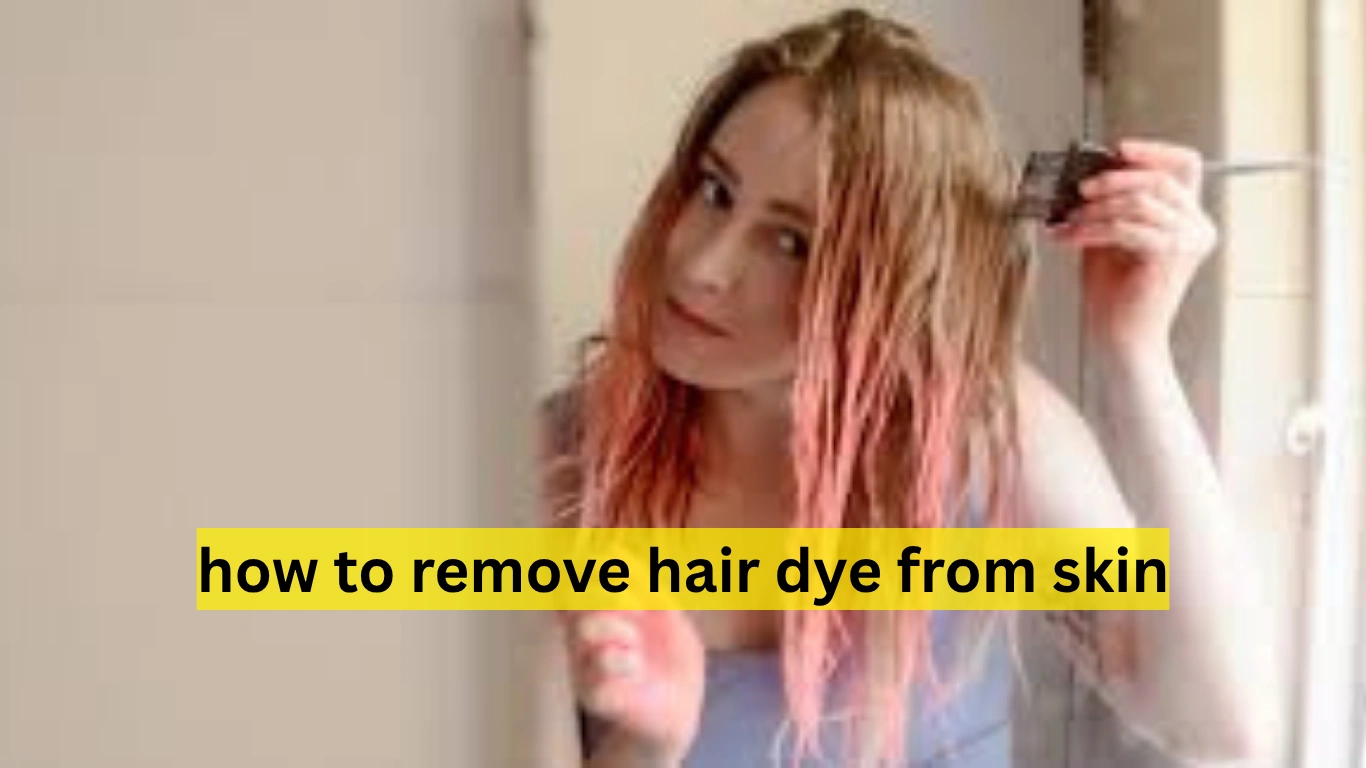Introduction to remove hair dye from skin
Coloring your hair at home is fun and easy, but accidents happen. A splash of dye on your forehead or ears can be frustrating. If you’re wondering how to remove hair dye from skin, you’re not alone. This common problem has simple, effective solutions. Whether you’re using permanent or semi-permanent dye, this guide will help you clean your skin safely without irritation.
Why Does Hair Dye Stain the Skin?
Hair dye is designed to stick to keratin, which is found in both your hair and your skin. When the dye sits on your skin too long, it soaks in. The result hair dye allergy symptoms. A dark or colored patch that doesn’t wash off with plain soap and water. This is especially common around the hairline, on the neck, and near the ears. The darker the dye, the more likely it is to leave a visible stain.
Best Home Remedies for Removing Hair Dye from Skin
If you’re dealing with dye stains, don’t panic. Several household items can help lift the stain gently and safely. Knowing how to remove hair dye from skin involves choosing the right method for your skin type.
Here’s a quick comparison of common methods:
| Method | What You’ll Need | Best For | Skin Sensitivity |
|---|---|---|---|
| Baking Soda + Dish Soap | Baking soda, dish soap | Tough stains on oily skin | Medium |
| Toothpaste (non-gel) | White toothpaste | Mild stains on normal skin | Low |
| Olive Oil or Coconut Oil | Any gentle oil | Sensitive skin | Very Low |
| Rubbing Alcohol | Isopropyl alcohol + cotton | Small spots on hands | Medium-High |
Using Baking Soda and Dish Soap
This combo works like a natural scrub. Mix one tablespoon of baking soda with a little dish soap. Rub gently on the stain in circular motions. Let it sit for a minute or two, then wipe off with a warm cloth. Repeat if needed. This is one of the fastest ways to remove dark dye marks from less sensitive areas like hands or arms.
However, don’t use this method around the eyes or on broken skin—it can be too harsh.
Removing Dye with Toothpaste

Toothpaste isn’t just for teeth. Non-gel, white toothpaste contains mild abrasives that can help remove dye stains. Apply a small amount directly to the spot. Rub it in gently with your fingertip or a soft cloth. Let it sit for 5 minutes, then rinse it off. Repeat once more if needed. This method works well for people with normal to slightly dry skin. It’s especially helpful for small stains near the hairline.
Oils for Sensitive Skin
If your skin is easily irritated, oils like coconut or olive oil are your best bet. These oils not only loosen the dye but also nourish your skin. Dab a small amount on a cotton ball and rub gently over the stain. Let it sit for 10-15 minutes before wiping away with a damp cloth. This method is slow but gentle. You can even leave the oil on overnight for deep stains just wear a soft headband or towel to avoid staining your pillowcase.
Using Rubbing Alcohol Safely
Rubbing alcohol is a powerful cleaner but should be used with caution. Apply a small amount to a cotton ball and dab it only on the stained area. Avoid rubbing hard or using it near sensitive spots. Always moisturize afterward to prevent dryness. This is best for people who have tough skin or stains on hands, not on the face.
How to Prevent Hair Dye from Staining the Skin
Learning how to remove hair dye from skin is important, but preventing stains is even better. Prevention takes just a few extra minutes and can save you a lot of hassle.
Here’s how to avoid future stains:
- Apply petroleum jelly or conditioner around your hairline before coloring.
- Wear gloves while mixing and applying hair dye.
- Wipe off splashes immediately using a damp cotton pad.
- Use a dye brush instead of fingers for more precise application.
When to See a Doctor
Most hair dye stains on the skin are harmless and go away within a few days. But sometimes, your body may react to certain chemicals in the dye, especially if you have sensitive skin or allergies. If the area becomes red, swollen, itchy, or starts to blister, it may be more than just a surface stain.
You should see a doctor immediately if:
- The stained area feels like it’s burning or painful
- You notice swelling around the eyes, lips, or face
- The skin develops rash, hives, or open sores
- You feel dizzy, short of breath, or develop a fever
These could be signs of a chemical burn or allergic reaction, and professional medical help is needed. Don’t try to treat these symptoms at home with more cleaning agents—they might make the condition worse.
Conculsion:
We’ve all been there excited to change our hair color, only to find stains on our forehead or fingers. The good news is, knowing how to remove hair dye from skin makes the process easier and safer. With common household items and a little patience, you can erase those marks and enjoy your fresh new look. Consistency, gentle methods, and prevention are key. Next time you color your hair, take a few extra steps to keep your skin clean and dye-free.
FAQs:
Can vinegar remove hair dye from skin?
Yes, diluted vinegar can help. Mix it with water and gently rub with a cotton pad.
Will hair dye naturally fade from the skin?
Yes, but it may take 2–5 days depending on the dye and skin type.
Is nail polish remover safe for removing dye?
Avoid it. It’s too harsh for facial skin and can cause burns or dryness.
Can lemon juice lighten dye stains on skin?
Yes, but it can sting. Use with caution and only on non-sensitive areas.







